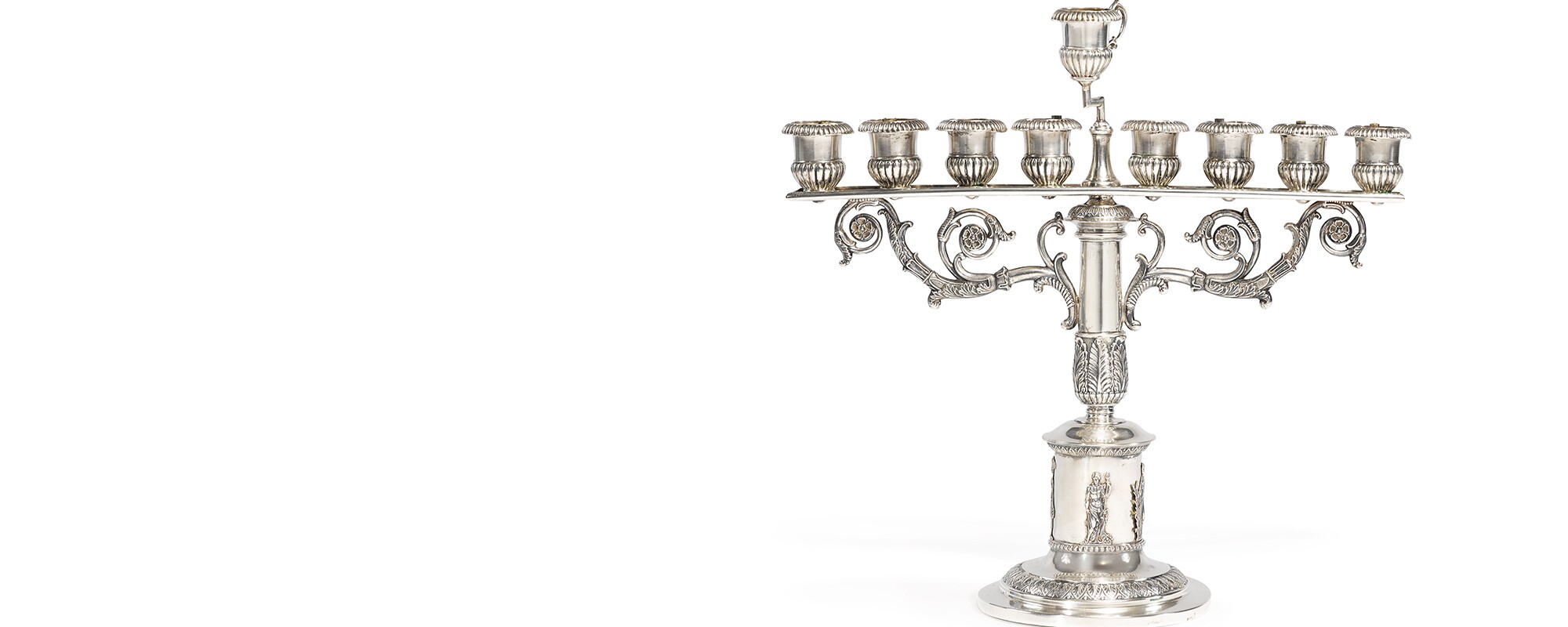T
his year’s sale of Important Judaica features an outstanding selection of Hebrew books and manuscripts, ceremonial objects, and paintings. Highlights include an autograph letter by Rabbi Levi Isaac of Berdychiv, a siddur used for prayer by the Satmar Rebbe, Joel Teitelbaum, in Bergen-Belsen and a magnificent Dutch micrographic Omer calendar by Zevi Hirsch ben David. The sale will also feature six pairs of historic silver Torah Finials consigned by the United Synagogue, London. A distinguished private collection covers four centuries of Judaic metalwork, from a 17th-century Viennese marriage belt to an 18th-century beaker by Myer Myers of New York, a figural 19th-century Seder Compendium, and 20th-century works by Arie Ofir and Ludwig Wolpert. These are complemented by one of the greatest paintings of a synagogue interior by Johannes Bosboom and a masterful painting by Isidor Kaufmann, called Am Sabbat (On the Sabbath), showing members of a family devoting themselves to the study of the Talmud on the Sabbath.

The United Synagogue was formed by an Act of Parliament in 1870 when three major Ashkenazi synagogues in the City of London – The Great, The Hambro’ and The New, and two West End synagogues – the Central and Bayswater joined together. The vision of Nathan Meyer Rothschild in 1823 and then Lionel Louis Cohen and Chief Rabbi Nathan Marcus Adler to unify and strengthen London Jewry was realised. The first US president, in 1870, was Anthony de Rothschild and the presidency was then held by successive generations of the Rothschild family right up to 1942.

A distinguished private collection covers four centuries of Judaic metalwork, from a 17th-century Viennese marriage belt to an 18th-century beaker by Myer Myers of New York, a figural 19th-century Seder Compendium and 20th-century works by Arie Ofir and Ludwig Wolpert). These are complemented by one of the greatest paintings of a synagogue interior by Johannes Bosboom and a masterful painting by Isidor Kaufmann, called Am Sabbat (On the Sabbath), showing members of a family devoting themselves to the study of the Talmud on the Sabbath.

The Texts and Textiles section is headlined by a magnificent Italian cover for a reader's desk, a remarkable Dutch micrographic Omer calendar by Zevi Hirsch ben David, a richly illustrated book of prayers created for a woman, autograph manuscripts by Rabbis Solomon Molkho, Levi Isaac of Berdychiv, and Moses Sofer, and a siddur used for prayer by the Satmar Rebbe, Rabbi Joel Teitelbaum, in Bergen-Belsen.





























